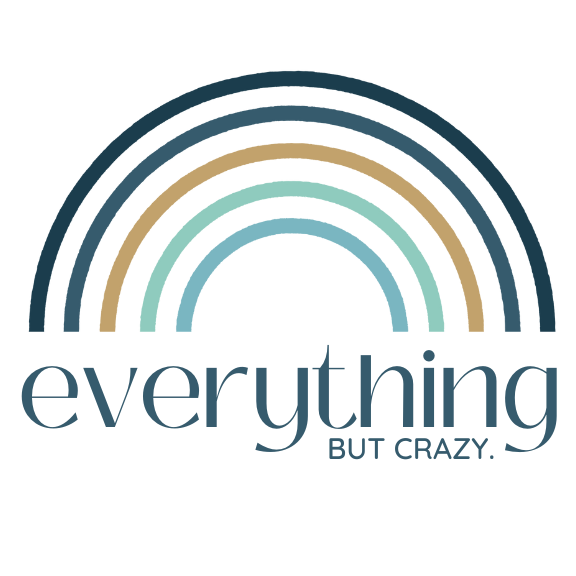At any given moment, can you identify what you’re feeling? And not just “bad,” “ugh,” or “like crap,” but I mean really put a word to your emotional state? Words like “guilty,” or “lonely” or “vulnerable,” or even “hopeful.” Being able to label your feelings with a word is called feelings identification and it is the foundation of healthy coping. So when it comes to trying to prepare your children for dealing with the ups and downs of life, teaching them this skill is key!
Many parents dream about all the things they want to teach their children– the ABCs, counting, how to ride a bike, etc. I dreamed about those things too, but as a psychologist, my dreams also included a little girl who knew her feelings. So it came as no surprise to those around me that soon after Boo turned 2 she was already using the words sad, mad, frustrated, happy, excited, and scared. Enter proud mama!

But this pride wasn’t just about my child learning a new skill. That of course was there (I mean, how cute is it to see a little bitty human using those words?!), but more than that, it was incredibly reassuring to witness her getting to know herself. Because once she knows how she feels, she can then start to consider what she needs. And once she knows what she needs, she can begin to find ways to meet those needs — in other words, then she can cope.
Such an important skill must be incredibly hard to teach, right? Well, fortunately for us parents, it’s not. Especially when your children are young. The biggest challenge is for you yourself to know what your child is feeling. To be fair, sometimes that is difficult. But most of the time when dealing with little ones, it’s pretty obvious— He wants a treat, but you said no. He’s probably mad. Her favorite doll just broke. She’s probably sad. The fire alarm just went off. He’s probably scared. You get the idea.
So when the feelings are fairly clear, all you have to do is verbalize them for your child. “I think you’re feeling mad right now.” Or sad, or frustrated, or whatever feeling applies. Just get in the practice of saying out loud what you are already noticing in your head. Because let’s be honest, it’s pretty difficult not to notice your kids’ feelings!
And when the feelings aren’t clear, you can say so. “You seem sad right now, but I’m not sure.” Or “I can’t tell if your sad or mad. Maybe you’re both.” You’re not always going to be 100% correct and that’s ok. In fact there’s plenty of times when we as adults have so many feelings going on at once that we can’t find a word to describe it. Saying this out loud for your child can help teach her that it’s ok to sometimes be confused about feelings.

The idea is just to keep verbalizing your child’s emotions. In the beginning, your child probably won’t react to this (except maybe to give you a funny look). But when she starts to routinely hear you provide a label for the commotion that’s going on inside, that is when it will start to click.
You’ll know when that happens when your child starts to either agree or disagree with the feeling you suggest. If your label was right, you might get a head nod, a “yah,” or even more intense crying (this might seem counterintuitive, but often times people cry even more once they’ve been given permission to cry. This is healthy and just one way of releasing all the emotion inside).
Now if you’re wrong about the feeling you suggest, your child might shake his head in disagreement, yell “no,” or tell you what he is feeling instead, “No, I’m not mad, I’m frustrated.” The first time Boo disagreed with the emotion I suggested she was feeling, I stood in awe as I recognized she knew her feelings well enough to disagree with me! Huge accomplishment!
By teaching your children how to identify and label feelings from the beginning, you are setting them up to learn the subsequent skills of figuring out what they need and finding ways to advocate for themselves.

So a child who has his toy stolen and knows he feels mad about it, can learn to take a deep breath, ask for his toy back, or get an adult’s help. While a child in that same situation who doesn’t understand his feelings may experience a bunch of confusing sensations and, without knowing any better, respond by hitting the other child. I think most parents would prefer their child to do the former!
And when children get a little older, the ones who understand their feelings are going to be better equipped at seeking out support for those feelings. They are going to be able to turn to their parents, or their teachers, or their best friends when they are feeling sad, or lonely, or angry. This makes them less vulnerable to things like depression, substance abuse, promiscuity, self-injurious behaviors, and school retention.
Many of the adults I’ve worked with in therapy are not able to identify or label their feelings when they first show up in my office. As a result, they’ve had a difficult time navigating the challenges of life because they haven’t been able to use the information that feelings provide to make educated decisions.
This is a skill that can be learned at any age (so rest assured if you have an older child, or if you yourself are struggling to identify your feelings– it can be learned!), but as with most things, it’s a lot easier to learn when you are young.
No matter how old your child is today, they will be one day older tomorrow. So don’t waste any time. Jump in and get to labeling those feelings. It’s one of very few skills you can teach that is sure to be relevant every single day of your child’s life!
____
Dana Basu, PsyD is a licensed clinical psychologist at EverGROW therapy and founder of Everything But Crazy, an online resource for parents. She provides individual therapy, support groups, and online resources for parents in Orange County and throughout the state of California via online therapy. She specializes in working with the highly sensitive person and people with difficult childhood experiences, trauma, parenting stress, and chronic guilt.

